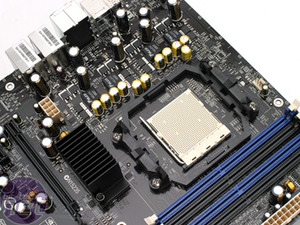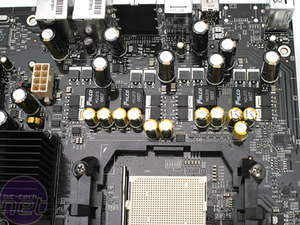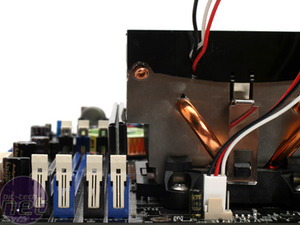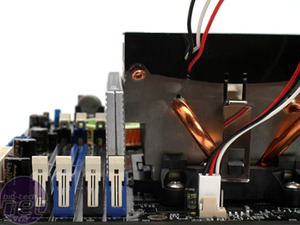
On the whole, the layout is well-thought out but there are some issues that may sway end users away from this particular board design. The first thing that became apparent was the minimal amount of room between the CPU socket and the first memory slot. In fact, we would go so far as to say that AMD's stock Athlon 64 FX-62 heatsink literally touches the memory that is installed in the blue memory slot closest to the CPU.


Of course, this may not be a problem for users looking to use this board with one of the slower Athlon 64 processors in conjunction with the stock heatsink, as we believe it is smaller and doesn't intrude on the memory slots quite so much. However, anyone that is considering the use of an aftermarket cooling solution may want to check whether the heatsink will fit or not with a memory module installed in the primary slot.
Insulation for phase change cooling may be a little tricky too, but that will ultimately depend on the cooling solution; in particular, the size of the evap head and the mounting solution will play a major part in how much of the area surrounding the CPU socket needs to be insulated.


As we have said for a while now, motherboard design is all horses for courses - design decisions affect a wide range of users in a different way. We think that the reason why the CPU socket is so close to the memory slots is due of the fact that the PWM controllers take up so much room next to the back I/O panel. This could be resolved had Foxconn implemented its Digital PWM technology into this board design. However, as Foxconn bought NVIDIA's reference design to market, the Digital PWM implementation would have required a complete redesign.

MSI MPG Velox 100R Chassis Review
October 14 2021 | 15:04






Want to comment? Please log in.